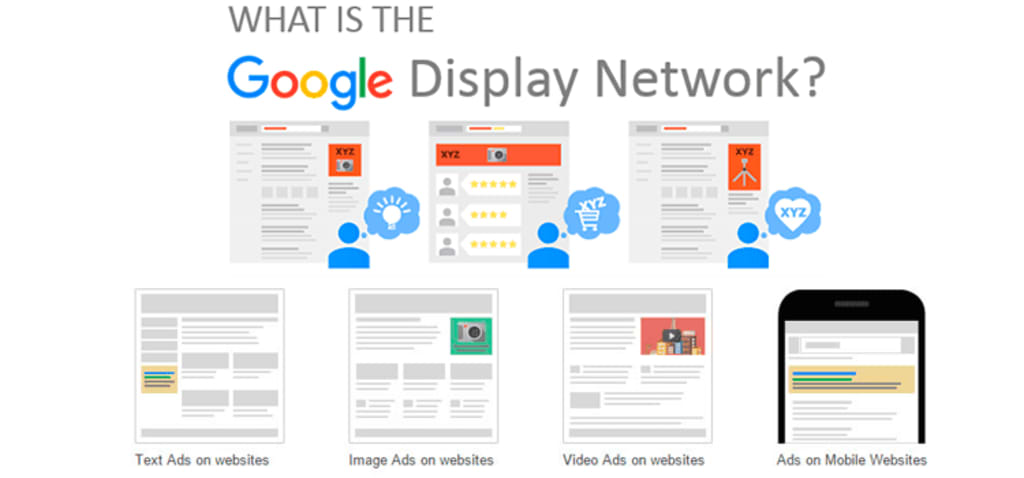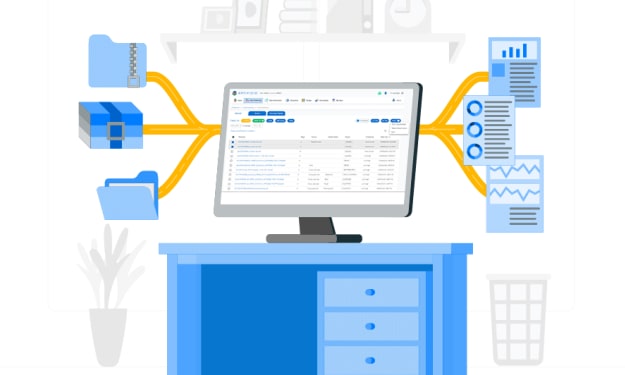How Do I Setup A Google Display Network Campaign?
Google Display Network Campaign

It’s a simple question and one that is asked by both new and experienced internet advertisers. For newcomers, entering into the realm of online advertising can be as daunting as it is exciting. Where do you even begin? There are also marketers that are very experienced with Search Network campaigns, but are only now exploring the Google Display Network.
No matter which group you fall under, you’ve come to the right place. This discussion will cover the basics of the Google Display Network and explain how you can start your first display campaign on this ad network.
What Is The Google Display Network? How Does It Work?
Google Ads is a large advertising platform consisting of multiple networks. The most well-known of these networks is the Google Search Network, for obvious reasons. Next in the popularity contest is the Display Network.
While search ads are handcuffed by being text-only, display ads can be created using images, videos, animations and more. The other major difference between the Display and Search Network is where the ads appear.
In the Search Network, ads appear on Google search results pages. The Display Network, on the other hand, spans across millions of websites on the internet. Some of these sites are immensely popular and attract thousands, even millions, of visitors a day, such as Gmail or YouTube.
How is the Google Display Network so large? Website owners become members of the Google Display Network through the AdSense program. This is a simple tradeoff where website owners give Google permission to publish ads on their site pages in exchange for a small amount of the advertiser’s costs. On the other hand cost of ads on google .
Also worth mentioning is how the cost of ads works on the Google Display Network. If you’re experienced with search ads, then you’re familiar with the pay-per-click model, where you pay each time a prospective customer clicks on your ad message.
Not all display ads follow this model. Some display campaigns use an impression-based system. Essentially, this means that you pay for ad views, rather than clicks.
The Benefits And Drawbacks Of The Google Display Network
Before you begin setting up your first Google Display Network, you need to consider whether this is the right strategy for your business’ marketing approach. Thus, it is important to understand the benefits that the GDN offers and any potential disadvantages that may impact your results.
Benefit: Visuals Trump Text
One of the best reasons to invest in display advertising is that your customers respond better to visuals than they do text. When a customer sees a text ad, they need to read the message and process the information in order to properly comprehend what’s being advertised.
Display ads don’t have this problem because they are predominantly image-based. When looking at visuals, customers can process the information much quicker and with less effort. They’ll engage with your display ads without even realizing it!
For this reason, display ads are incredible at building brand awareness and recall.
Drawback: Visuals Are Harder To Develop
While visuals are simple for your audiences to engage with, they are harder for you to create. Let’s face it, writing up a text-only ad message is much, much faster than creating an image or video ad.
If you want to advertise a lot of items or services, developing unique visual ads for each one is a tedious process that may eat up a lot of time and important resources.
Benefit: Massive Reach
There are millions of websites connected to the Display Network, which means you’ll have little or no problems reaching your target audience. Plus, some sites included in the Display Network are some of the most popular on the internet. This means you’ll have a wide and deep reach.
Drawback: Targeting
With the Display Network, there are a number of ways that Google tries to match the content of your ads with the right types of websites and customers. They don’t want to put ad messages in front of irrelevant audiences. That said, there are some limitations to this and Google doesn’t always get it right.
You may find yourself spending a lot of time managing ad placements and excluding certain websites from your targeting. When your ads are placed on not-so-relevant sites, your metrics suffer and, if you’re using an impression-based bid strategy, your ad budget is wasted.
Setting Up Your First Google Display Network Campaign
The first thing you need to do is to create a new campaign. If you’ve created search campaigns in the past, then this process is no different, until you need to select the campaign type.
If you’re new to starting a Google Ads campaign, here are some simple instructions to get started:
- Sign into your Google Ads account (if you don’t have an account, follow the necessary prompts to begin creating your Google Ads account).
- From the main dashboard, click on “Campaigns” from the list of options along the left side of the screen.
- Once at the campaign screen, click the large, blue plus sign to start creating a new campaign.
- First, you’ll be asked to set a goal. What do you hope to achieve with this campaign? You can also choose to proceed without a goal selected.
These steps will get you to the point where you can choose to create a display campaign. This is where the road diverges from what you may already be familiar with.
The biggest decisions to make are with regards to targeting. You can choose to target based on a particular customer profile, which can be general (example: young men) or more specific (example: stay-at-home mothers). Alternatively, you can target sites based on content and keywords.
Again, monitoring your ad targets is very important on the Google Display Network because you may find that your ads are appearing in front of irrelevant audiences.
Conclusions
The best way to ensure that your new display campaign is properly set up and that it is ready to begin providing results is to enter the process with a plan.
Planning is an essential part of any marketing process. When creating a display campaign, your plan should cover why you want to advertise on the Display Network in the first place, what the goal for the campaign is, how much budget there will be, who the desired audience is, how they will be targeted and more.
Essentially, this plan will cover all dimensions of your display strategy and will act as the roadmap when you set up your Google Display Network campaign.
About the Creator
Enjoyed the story? Support the Creator.
Subscribe for free to receive all their stories in your feed. You could also pledge your support or give them a one-off tip, letting them know you appreciate their work.





Comments
There are no comments for this story
Be the first to respond and start the conversation.